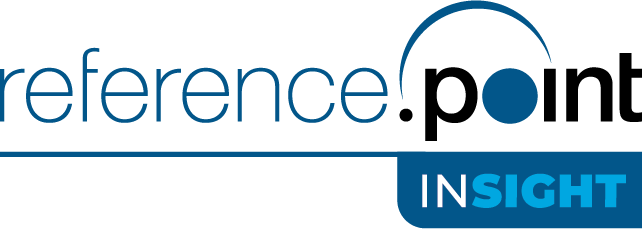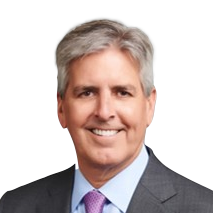
The Sport of Mortgage Banking The Power of the Playbook
May 2022
Straight To The Point
To persevere in the sport of mortgage banking requires a team to be constantly adjusting, adapting, and preparing for the next season. As you prepare for this challenging season, are you focused on putting up your best Defense to hold your current position or have you been investing in an Offense that can put more points on the board? A comprehensive playbook including a strategy for cost management along with a focus on sustainable efficiencies, a robust training plan, and market growth initiatives will be a powerful tool for those looking to win for years to come.
The mortgage industry is undergoing a transformative shift. With rates increasing faster than expected and housing inventory at continued lows, mortgage volume is likely to remain at these decreased levels into the near future. Adding to the pressure is an industry that has 2X the capacity for current volumes, which is leading to irrational pricing and significant pressure on margins. The combined impact has led to a series of defensive moves in attempts to protect the bottom line. While the urgent need to create efficiencies and shed excess capacity is necessary to survive in this market, focusing on big plays to grow volume, increase revenue and implement process efficiencies is vital. Technology and process improvements, product development, capital market and servicing strategies, retention plans, and advancing the consumer experience remain strategic imperatives.
There is not a one size fits all solution and the companies who know their end goal are the most likely to survive and thrive over the coming years.
What’s in your Playbook?
Play 1: Adjust the Model-Right the Organization
Teams with a strong purchase strategy are well-positioned in this market and can focus on targeted adjustments for growth, while others have a bigger hill to climb as they also work to pivot away from their dependency on the dwindling refinance market. Regardless of the situation, excess capacity and superfluous costs must be reduced to match the current market.
Cutting costs and capacity is a huge distraction for a team and there are common traps that can create operational issues, sales disruptions, or quality declines that lead to unforeseen decreases in revenue, unexpected costs, loan repurchases and losses, regulatory penalties, and fines or requirements that shift the focus of corporate resources on non-revenue generating activities. Moreover, making considerations to retain resources who will be needed to bring new products to market, improve the consumer experience, and leverage technology to increase efficiencies will keep the company relevant in this the changing landscape.
A strategic cost cutting exercise with the right expertise does not have to be an arduous process. The amount of time evaluating teams through a cross functional exercise can ensure these complex decisions create the best possible outcome. This starts with a robust analysis comparing the go-forward environment with the organizations strengths and weakness and creating a triaged roadmap of priorities.

Play 2: Merge to Scale-Leverage Efficiencies and Reduced Redundancies to Invest in Growth
Whether you are buying or selling to create the necessary scale, M&A may be a company’s best route to build a winning team. Striking the right deal can be difficult but it is just the start. To realize the benefits, a well-executed integration plan built on a strategy that can remove cost through reduced redundancies’ without comprising the revenue is critical. Without investment in building a strategy for the combined organization that incorporates a robust communication plan, organizational change management, and precision timing on clearly defined deliverables, the success of the integration is at risk.
Companies need to minimize risk and maximize opportunities around the following:
Consumer: Consumers must view the combined organization as operating within expected standards and receive assurance it will continue to do so.
Productivity: Business and technology operations must achieve synergies via the consolidation of organizational structures, processes, and applications.
Profit: The combined organization must realize the necessary level of cost savings to deliver on promises to shareholders and other constituents.
Culture: Clear, consistent, and honest communications is critical. Employees must be continuously informed of changes to values, goals, and responsibilities through to reduce unwanted attrition.
Risk: Gaining a clear understanding of additional credit and regulatory risk that is being taken on must be considered prior to striking the deal and agency and regulatory approvals will be a key driver of merger timing.
Play 3: Investing in the Consumer Experience
Investing is the marathon move in an industry that is trying to win through sprints! As exhaustion sets into the industry from numerous short-term changes, making investments in improving the consumer experience can be the foundational change to differentiate a company and allow it to compete on something other than price and product. Satisfied consumers can become your biggest fan base driving repeat business and referrals, in turn, supporting the retention of your valued sales team in all market cycles.
From artificial intelligence/machine learning to omni-channel programs and more, these impactful solutions can make the difference in whether a company will win in this shifting landscape. The first step is to define, document, and determine metrics to evaluate the solution. Too many companies build or purchase applications without really understanding how they are best used, which usually leads to poor implementation and low adoption. Proper implementation of these innovative technologies enables more streamlined mortgage processes, better customer experiences, and reduced risks.
For an industry that is traditionally slow to embrace change, innovative technologies and approaches can pose challenges. However, those that invest for the future and welcome the opportunity to transform will create a distinctive advantage against the competition.
Transformation Risks
All these strategies come with their own benefits and risks. The focus on cutting costs and growing volumes will be top of mind for the industry but history has shown us that a disregard for credit quality and compliance management can erase all the gains and more.
A “race to the bottom” in the credit box may create short term increases in volume but also expose the company to potentially substantial costs down the road that can easily outweigh any revenue increase achieved. As the origination team clamors for additional sales opportunities, it is easy to be persuaded to add esoteric products and expand credit. As we have seen in the past, these short term “wins” can be lethal to a company months or years later. Striking the right balance between credit and product expansions requires disciplined routines for credit policy evaluation, systems support, and training that allows a company to understand and properly reserve for the risk.
Regulatory agencies continue to increase focus in Fair Lending and UDAAP (Unfair and Deceptive or Abusive Acts Practices) for both banks and non-banks. Both areas have broad interpretation of the requirements, and it is still unknown what could be considered a violation. This could have significant financial and reputational impacts if a violation is determined, and a company cannot show they implemented policies, controls, and oversight to manage compliance.
Additionally, solutions that are required to keep pace with technology advancement and data protection such as cloud migration, information security, and transformation of old applications must be considered a ticket to play. Modern technologies mean a greater reliance on third-party providers. It is critical to establish a robust third-party risk management program and data governance with proper structure, processes, and technologies in place to keep your organization safe and compliant with regulatory expectations.
In closing, teams rally around leadership that can articulate the strategy and lay out the game plan. Your playbook should include a strategic evaluation which outlines the priorities, documents execution and defines measurements of success to align and mobilize your team. By maintaining focus and investments on both your defensive and offensive strategies you will be well positioned to win at both the short and long game!
Meet our Housing Finance Experts
VICKI BOTT
As Director, Reference Point Housing Finance Vicki has extensive leadership experience across the financial services industry. During her 35-year mortgage-banking tenure, she held the following positions:
- EVP, Regulatory Compliance and Operational Risk at Guaranteed Rate (Stearns Lending)
- Credit Strategy SVP of Wells Fargo home Lending
- National Sales Support and Strategy Wholesale SVP at Wells Fargo Home Lending
- Deputy Assistant Secretary/Single Family of Housing and Urban Development (HUD)
BILL BECKMANN

Senior Advisor to Reference Point – Housing Finance
Bill has 40 years of experience in financial services focused primarily on mortgage banking operations and technology. Previous roles include:
- Senior Advisor at Housing and Urban Development
- Director and Committee Chair of non-profit, for-profit, and loan fund boards at Enterprise Community Partners
- CEO of Merscorp Holdings, Inc.
- CEO of CitiMortgage, Inc.
- CEO of The Student Loan Corp
JON BAYMILLER

Engagement MD and Mortgage Operations Expert
Jon has 35+ years of experience in the residential mortgage industry. Previous roles include:
- President & CEO of New York Community Bank Mortgage Banking
- Advisory Board Member of Union Home Mortgage, Inc.
- Executive Vice President at AmTrust Bank
- Executive Vice President at CitiMortgage
- Executive Vice President and COO of Principal Residential Mortgage
 MIKE MCPARTLAND
MIKE MCPARTLAND
Engagement MD and Private Banking Mortgage Expert
Mike has 30+ years of experience in financial services with extensive experience leading teams in mergers and transformation initiatives across organizations. Previous roles include:
- Managing Director at Citigroup
- Global Head of Residential Real Estate Lending
- North America Head, PB Lending
- US PB Fair Lending Officer
- Managing Director at JPMorgan Chase
- US Residential Mortgage Product Head, PB and WM
DAVE STADLER

Engagement MD and Mortgage Technology Expert
Dave has over 40 years of experience in Financial Services with a broad background in operations and technology across financial services. Previous positions include:
- Mortgage CIO experience at Freddie Mac and GMAC/ResCap/Ally
- ~20 years at Accenture as a partner focused primarily on mortgage banking and technology
DAVE STEVENS

Senior Advisor to Reference Point – Housing Finance
Dave is a 38-year veteran of Mortgage Banking. He has led a variety of teams both in the industry and in Washington. Previous roles include:
- President and CEO of MBA
- U.S. Asst. Secretary of Housing, Fed Housing Commissioner at HUD
- President and COO of Long & Foster Real Companies, Inc.
- Head of Single Family at Freddie Mac
- Head of Wholesale Lending at Wells Fargo
Table of Contents
About Reference Point
Reference Point is a strategy, management, and technology consulting firm focused on delivering impactful solutions for the financial services industry. We combine proven experience and practical experience in a unique consulting model to give clients superior quality and superior value. Our engagements are led by former industry executives, supported by top-tier consultants. We partner with our clients to assess challenges and opportunities, create practical strategies, and implement new solutions to drive measurable value for them and their organizations.
